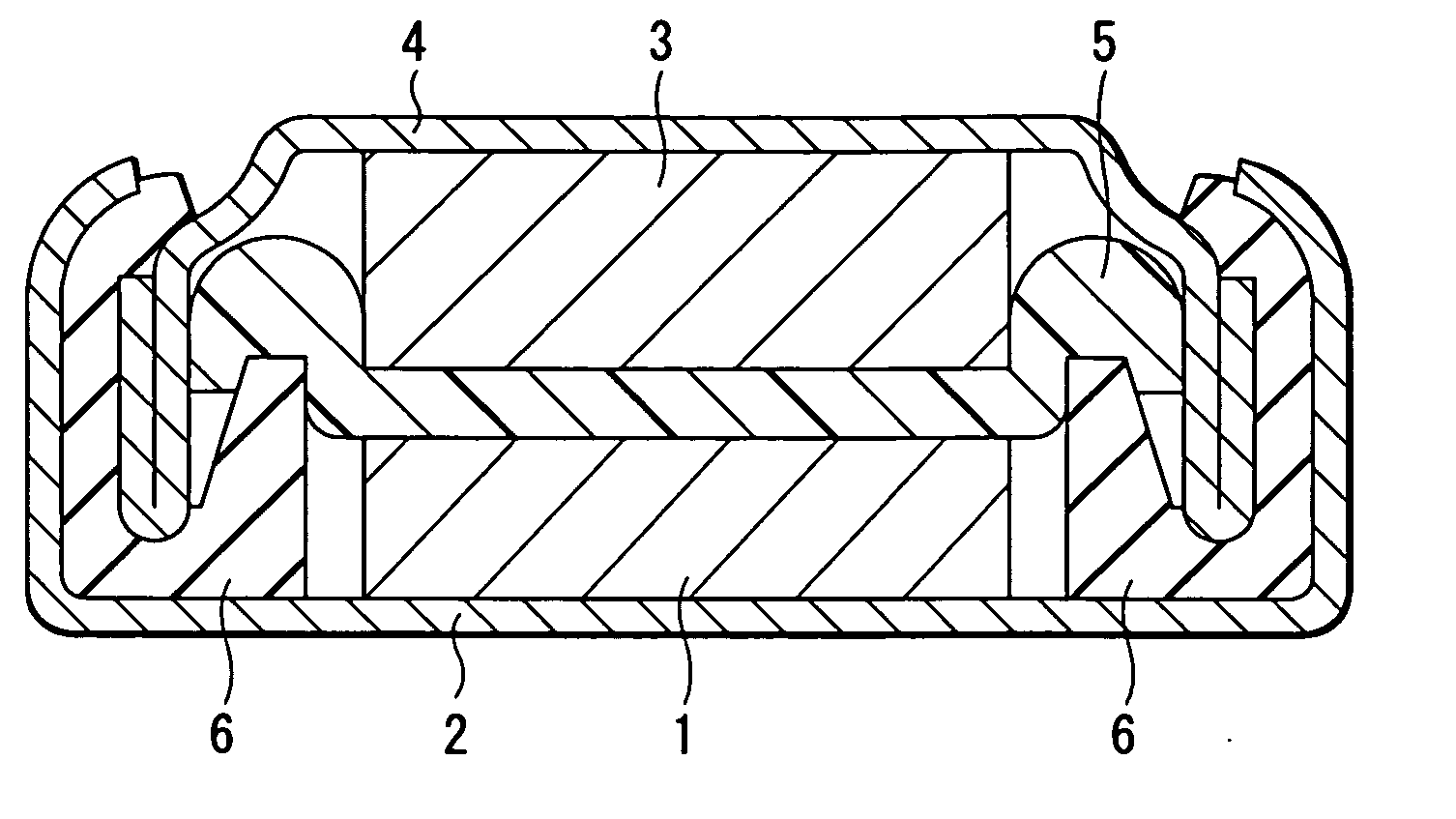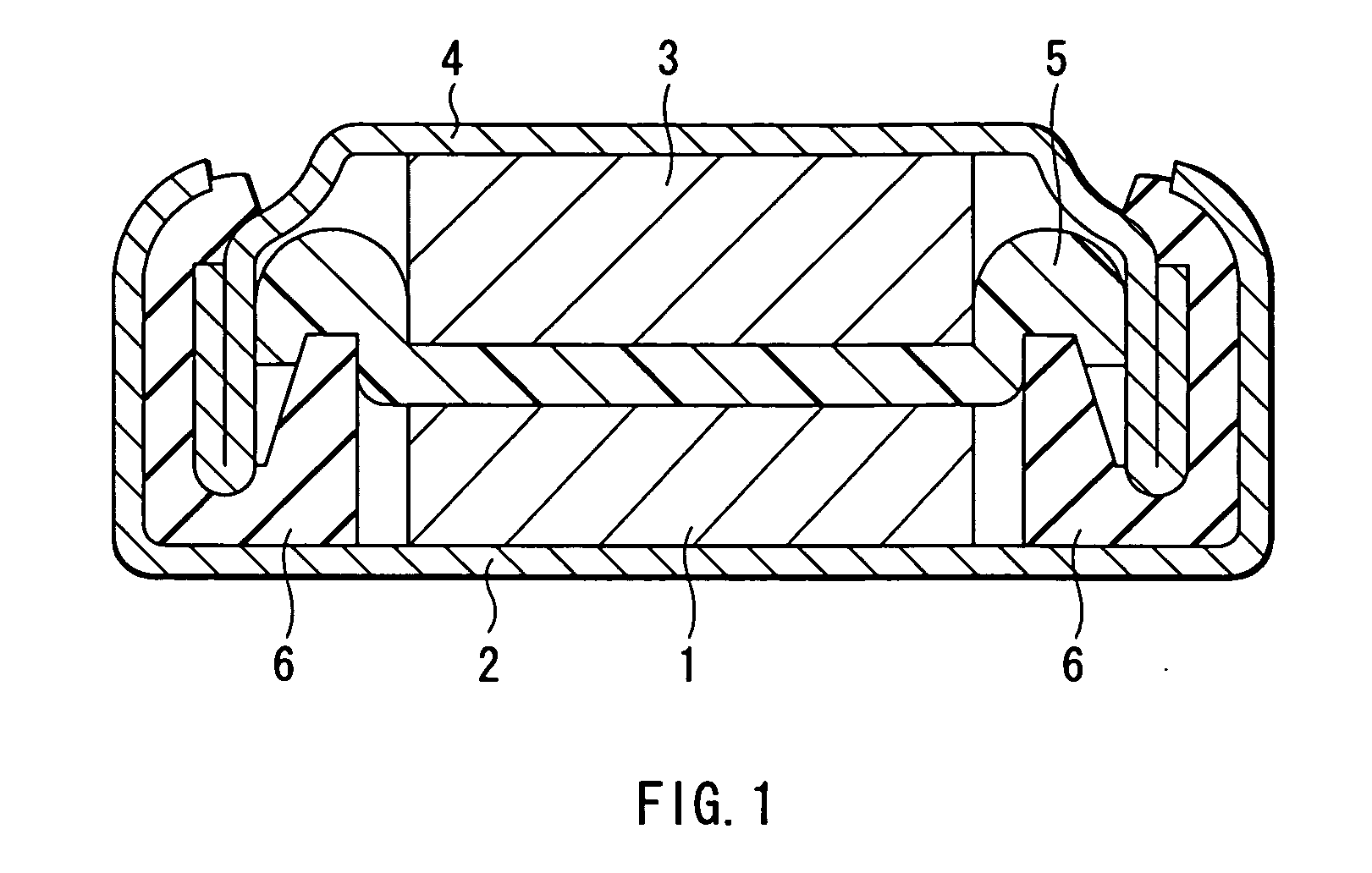Negative active material and method for production thereof, non-aqueous electrolyte secondary cell using the same
a negative active material and secondary cell technology, applied in the field of anode active materials, can solve the problems of reducing the discharge voltage of the battery, unable to achieve significant improvement in the energy density of the battery, and further increasing the capacity of the carbon material
- Summary
- Abstract
- Description
- Claims
- Application Information
AI Technical Summary
Benefits of technology
Problems solved by technology
Method used
Image
Examples
example 1
[0045] After materials in a powder form were dry mixed to form a mixture, approximately 400 g of corundum with a diameter of 9 mm was set in a reaction vessel of a planetary ball mill manufactured by Ito Seisakusho. The mixture ratio M:R of the element M (=copper, tin) and the element R (boron) was 8:2 (in a weight ratio), and the total amount of inputted powder was 10 g. After the measured powder was put into the reaction vessel, an argon atmosphere is substituted in the reaction vessel, and the rotation speed was set to 250 rpm. The operation cycle of a 10-minute operation and a 10-minute interval was repeated so that the total operation time reached 20 hours. After the completion of a mechanical alloying reaction, the reaction vessel was cooled down to a room temperature, and then the synthesized powder was taken out to remove coarse particles through sifting the powder through a 200-mesh sieve, thereby the anode active material (alloy material) was obtained.
[0046] Next, a test ...
examples 2 through 8
[0050] Coin-type batteries were formed as in the case of Example 1, except that in the element M, the kind of an element combined with tin was changed.
example 9
[0056] A coin-type battery was formed as in the case of Example 1, except that the battery had the same composition as that of Example 2 and the specific surface area was 70 m2 / g.
PUM
| Property | Measurement | Unit |
|---|---|---|
| atomic number | aaaaa | aaaaa |
| median size | aaaaa | aaaaa |
| discharge voltage | aaaaa | aaaaa |
Abstract
Description
Claims
Application Information
 Login to View More
Login to View More - R&D
- Intellectual Property
- Life Sciences
- Materials
- Tech Scout
- Unparalleled Data Quality
- Higher Quality Content
- 60% Fewer Hallucinations
Browse by: Latest US Patents, China's latest patents, Technical Efficacy Thesaurus, Application Domain, Technology Topic, Popular Technical Reports.
© 2025 PatSnap. All rights reserved.Legal|Privacy policy|Modern Slavery Act Transparency Statement|Sitemap|About US| Contact US: help@patsnap.com


